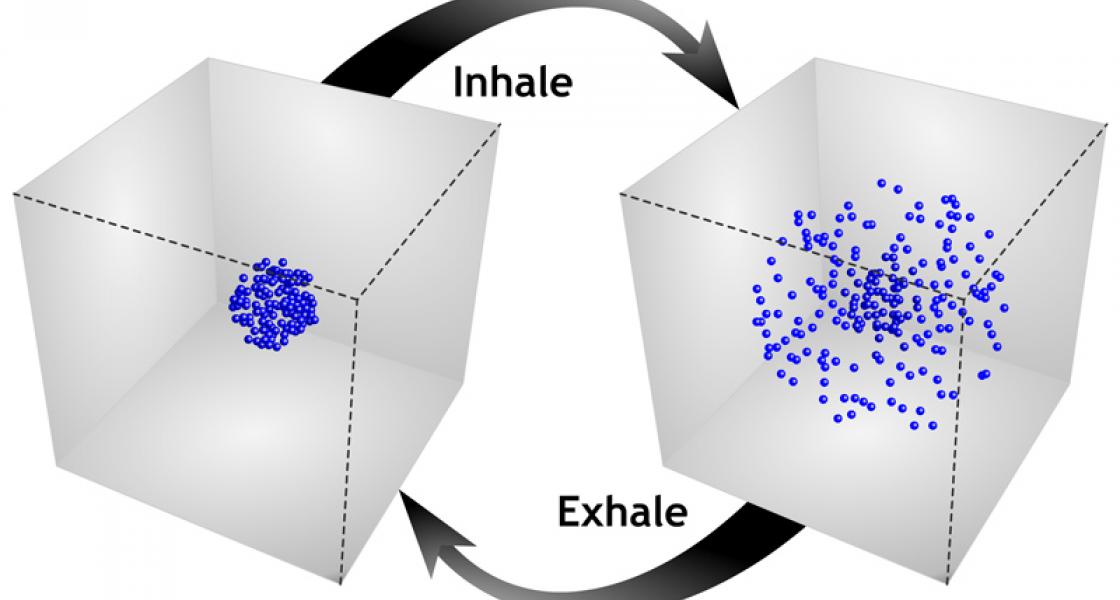A Fermi sea forms at ultracold temperatures when fermions in a dilute gas stack up in the lowest possible energy states, with two fermions in each state, one spin up and one spin down. New analytic techniques for diving headfirst into the fundamental physics of this exotic form of matter were recently developed by graduate students Seth Rittenhouse and Javier von Stecher, Fellow Chris Greene, and former postdoc Mike Cavagnero, now at the University of Kentucky.
Seth got the ball rolling (so to speak) by representing a cloud of ultracold fermions with a form of elliptic geometry known as the hyperspherical model, which allowed him to characterize a dilute Fermi gas as a sphere of atoms. Initially, the size of the gas cloud in its ground state was described by a single coordinate. He determined the cloud’s size from a parameter known as the scattering length, which describes all the interactions between the fermions in different spin states inside the ultracold cloud.
With his model, Seth varied the size of the gas cloud, which allowed him to map the system energy for differing cloud sizes and determine an effective potential characterizing the behavior of the cloud. Then, he created a breathing mode for fermion clouds by squeezing them and letting them expand, as shown above, and then measuring the frequency of the oscillations. He found that while his model did a reasonable job of describing the behavior of low-density gas clouds, it didn’t work nearly as well for high-density clouds. For instance, the model predicted that high-density clouds would collapse down to a single point and then explode to smithereens. The problem was that such Bosenova-like behavior doesn’t actually occur in the laboratory. When a theoretical analysis doesn’t reflect reality, it must be modified.
Javier pitched in to help with a detailed analysis of the effective scattering length that shows how it depends on density. In this analysis, as the density increases, the number of interactions experienced by any given particle increases because there are more particles nearby. However, the interaction experienced by that particle actually decreases because it only “sees” the average of the interactions of all the other nearby particles.
When he incorporated Javier’s density-dependent scattering length into his hyperspherical model, Seth found that the model no longer predicted the collapse of even a very large fermion cloud. The revised model could also predict the overall energy and size of an ultracold fermion cloud, no matter how dense. When he tried squeezing very large clouds (making them very dense), he found that the interactions between any given pair of atoms actually got weaker!
Curiously, when Seth and Javier looked at what happens to a very dense fermion cloud when the number of spin components is increased to four or more, even the revised model predicted a Bosenova-like instability. This is a dramatic prediction that has not yet been tested experimentally. Clearly, there’s a lot more to learn about spin interactions in a Fermi sea — not to mention how superfluidity might affect the dynamics of this exotic form of matter. - Julie Phillips




